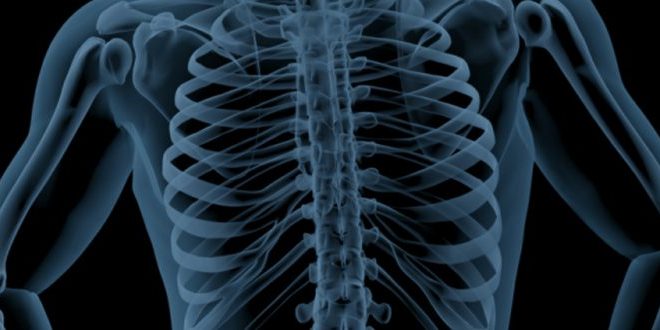Integrating Myofascial Release into Wellness Plans: Rethinking Wellness from the Inside Out
Wellness plans often focus on diet, sleep, exercise, and stress management—but neglect the connective tissue system that underpins all movement. Fascia dysfunction from poor posture, repetitive strain, or stress can limit mobility, cause pain, and undermine other healthy habits. Myofascial release restores fascia glide, improves circulation, and calms the nervous system to support fitness, recovery, and stress relief. Integrating targeted fascia work ensures your body can fully benefit from nutrition, movement, and recovery protocols.

A wellness plan is often built around the fundamentals—eating clean, exercising regularly, getting quality sleep, and managing stress. These pillars are essential, but there’s one critical layer that often gets missed: the health of your fascia, or connective tissue. This internal web influences how you move, how you feel, and how effectively your body can carry out all the other components of your wellness routine.
Fascia is the soft tissue system that surrounds and connects your muscles, joints, nerves, and organs. When it’s healthy, it moves freely and supports efficient, pain-free movement. When it becomes tight or restricted—often from repetitive motion, poor posture, old injuries, or even emotional stress—it can create tension, limit mobility, and quietly undermine your overall well-being.
This is where myofascial release becomes an essential part of the equation. Unlike general massage or passive stretching, myofascial therapy works directly with these restrictions to restore motion, relieve pressure on nerves and joints, and improve circulation. The result is a system that functions more fluidly and efficiently—freeing you up to move better, sleep deeper, and reduce pain at its source.
Integrating myofascial release into a wellness plan isn’t just for athletes. Anyone who wants to improve how they feel day to day, whether that means chasing kids, sitting through long meetings, or simply getting up in the morning without stiffness, can benefit from this targeted approach. It’s a foundation that supports all other aspects of wellness—enhancing the effectiveness of nutrition, movement, and recovery habits by making sure your body’s structure can support them.
What Is Myofascial Release?
Myofascial release is a targeted manual therapy that works specifically with the body’s fascia—the connective tissue network that surrounds and supports muscles, joints, and organs. When fascia becomes tight or restricted, it limits movement, creates tension, and contributes to pain and dysfunction. Myofascial release addresses these restrictions by applying sustained pressure and guided movement to restore mobility, reduce pain, and improve overall tissue health.
Unlike traditional massage, which is often focused on relaxation and general muscle tension, myofascial release is a functional, corrective therapy.
- Massage = Relaxation
- Myofascial = Function + Correction
The goal isn’t just to feel better temporarily—it’s to correct imbalances, restore natural movement patterns, and create long-term structural improvements in the body.
At Mountain Movement Chiropractic & Natural Health, myofascial therapy is applied using advanced, evidence-based techniques that go far beyond surface-level work:
- Myofascial Release Therapy (MRT): Hands-on therapy that targets restricted fascial tissue with sustained pressure and movement to restore natural mobility.
- IASTM (Instrument-Assisted Soft Tissue Mobilization): Tools are used to locate and break down scar tissue and adhesions in the fascia.
- Trigger Point Therapy: Focused pressure on hyper-irritable muscle knots to release referred pain and restore proper muscle activation.
- PNF Stretching (Proprioceptive Neuromuscular Facilitation): Active stretching technique combining contraction and relaxation to enhance flexibility and neuromuscular control.
- Trigenics: A neuro-muscular technique that combines movement, breathing, and sensory input to reset how muscles communicate with the brain.
- Percussion Therapy: High-speed vibration used to stimulate circulation, activate muscle tissue, and reduce tightness quickly.
These techniques are chosen based on the individual’s movement assessment and personal goals. Whether you’re struggling with chronic pain, limited flexibility, or recurring injury, myofascial release can be the corrective tool that helps your body function the way it was designed to.
Why Integrate Myofascial Work into Your Wellness Plan
For Better Movement
When fascia is tight, it restricts joint mobility and muscle function. Myofascial release restores natural tissue glide, improving posture and joint alignment. This allows your stretching, strength training, and mobility work to become more effective and sustainable. Movement becomes smoother, more efficient, and less fatiguing.
For Stress Relief
The fascia is closely connected to the nervous system and can hold onto stress long after a mental or emotional event has passed. Myofascial release helps unwind these “tension traps,” calming the nervous system and reducing the body’s stress response. This can improve sleep quality, heart rate variability, and overall resilience.
For Injury Prevention
Tight fascia alters movement patterns, often forcing the body to compensate in ways that increase wear and tear on joints and muscles. Myofascial therapy improves muscle firing and neuromuscular balance, correcting asymmetries before they lead to injury. It creates a more stable foundation for your workouts and daily activities.
For Detoxification & Circulation
Fascial restrictions can compress lymphatic vessels and blood flow, limiting the body’s ability to eliminate waste and deliver nutrients. Releasing these restrictions improves circulation, supports immune health, and helps reduce inflammation at the tissue level.
For Mental Wellness
Fascia stores more than just physical strain—it can also hold emotional tension. Releasing fascial tightness often leads to a sense of physical and emotional release. Many patients report feeling clearer, lighter, and more grounded after sessions, making this therapy a supportive tool for both mental and physical well-being.
What Integration Looks Like at Mountain Movement
Initial Movement and Posture Assessment
We begin with a detailed assessment of your posture, movement patterns, and joint function. This helps us understand how your body is compensating, where restrictions exist, and how fascia may be limiting your overall mobility and performance.
Muscle Mapping and Fascial Evaluation
Using hands-on palpation and functional testing, we create a muscle map that highlights the areas where fascial restrictions, imbalances, and underperforming muscles are contributing to dysfunction. This map becomes a guide for your customized treatment plan.
Personalized Treatment Plans
Your plan is not off-the-shelf. It’s built to address:
- Current restrictions that are limiting movement or causing pain
- Your goals—whether it's better flexibility, reduced tension, improved performance, or faster recovery
- Your lifestyle—we factor in how you live and move every day, whether you’re sitting at a desk, chasing toddlers, training for a sport, or all of the above
Ongoing Therapy Sessions
Each visit combines:
- Soft tissue work to release restrictions
- Functional chiropractic adjustments to reset joint mechanics
- Movement instruction to retrain proper neuromuscular patterns
This approach ensures your fascia, muscles, joints, and nervous system are working together—not in conflict.
At-Home Recommendations
Between sessions, we equip you with:
- Targeted mobility drills to support your progress
- Hydration and sleep optimization tips to keep fascia healthy
- Lifestyle-based movement guidance to prevent setbacks
Collaborative, Integrated Care
As needed, we bring in additional support like functional medicine for inflammation or hormonal imbalances, or laser therapy to accelerate healing. Your care team communicates across these services, ensuring a unified strategy that supports your full-body wellness.
Who Can Benefit from a Myofascial-Focused Wellness Plan
Office Workers with Posture Fatigue
Long hours at a desk create tension across the neck, shoulders, hips, and low back. Over time, this leads to restricted fascia, reduced circulation, and poor posture that can't be corrected by stretching alone. Myofascial release helps reset the body and relieve the strain of modern work life.
Chronic Pain Sufferers
Many chronic pain conditions are rooted in or worsened by fascial dysfunction. Whether the diagnosis is vague or complex, addressing fascial tension often brings lasting relief when other treatments have failed.
Individuals with Fibromyalgia, TMJ, or Tension Headaches
Conditions like fibromyalgia and temporomandibular joint dysfunction (TMJ) are often linked to widespread fascial tightness and nervous system irritation. Myofascial work calms these patterns, reduces sensitivity, and improves daily function without reliance on medication.
Athletes In-Season or During Recovery
Athletes at any level rely on full-range, pain-free movement to perform. Whether in-season, during rehab, or off-season training, myofascial release supports faster recovery, better performance, and reduced injury risk.
Anyone Hitting a Wall with Typical Wellness Efforts
Sometimes, you're doing all the right things—eating well, working out, sleeping—but something still feels “off.” Tight fascia may be silently limiting your progress. Myofascial therapy can be the missing link that unlocks the full benefits of your wellness routine.
Patients in Functional Medicine Programs
Those addressing gut health, inflammation, hormone balance, or autoimmune issues through functional medicine often forget that the body stores tension in tissues. Integrating myofascial therapy into these protocols improves lymphatic drainage, calms the nervous system, and accelerates total-body healing.
Fascia Is the Foundation
When it comes to true wellness, it’s not just about eating well, exercising, or sleeping more—it’s about how your body moves, functions, and adapts through it all. If your fascia is restricted, your efforts can feel like you're constantly working against yourself. But when fascia is released and moving freely, the body responds better to everything else you do.
Fascia has the power to either limit or unlock your wellness journey. It affects mobility, posture, nervous system regulation, and even how you process stress. Myofascial therapy brings structural alignment, improved movement, and deep nervous system calm to the entire body—making it a powerful foundation for any long-term wellness plan.
📞 Call now: (864) 448-2073
📍 Visit us at: 1901 Laurens Road, Suite E, Greenville, SC 29607
🌐 Explore more: https://mountainmovementcenter.com
🗓️ Book your evaluation today to discover how fascial health may be holding you back—and how we can help you move forward.
📲 Follow us for movement tips, success stories, and wellness tools:

We Treat the
Toughest Cases
We'd love to talk with you about yours. Ask us anything and we will get back to you with a detailed answer about your case.

.jpg)




